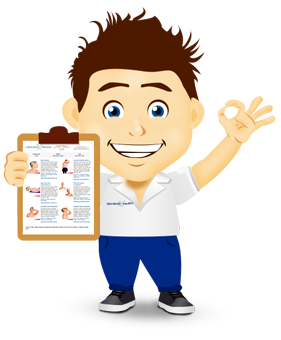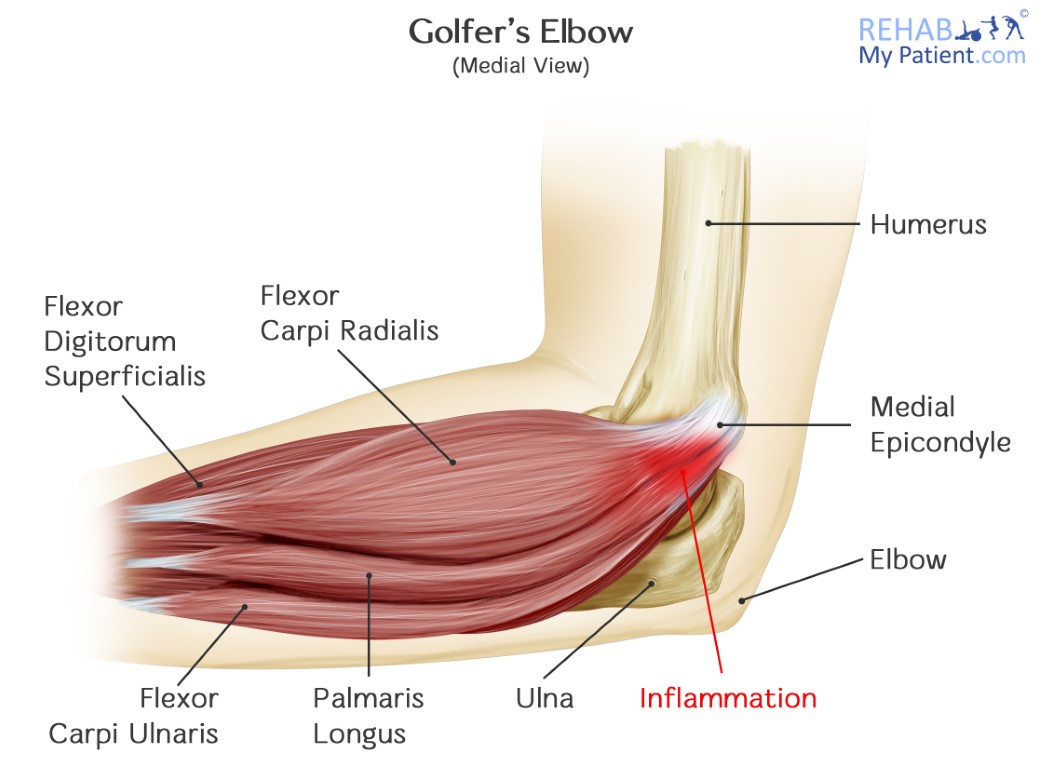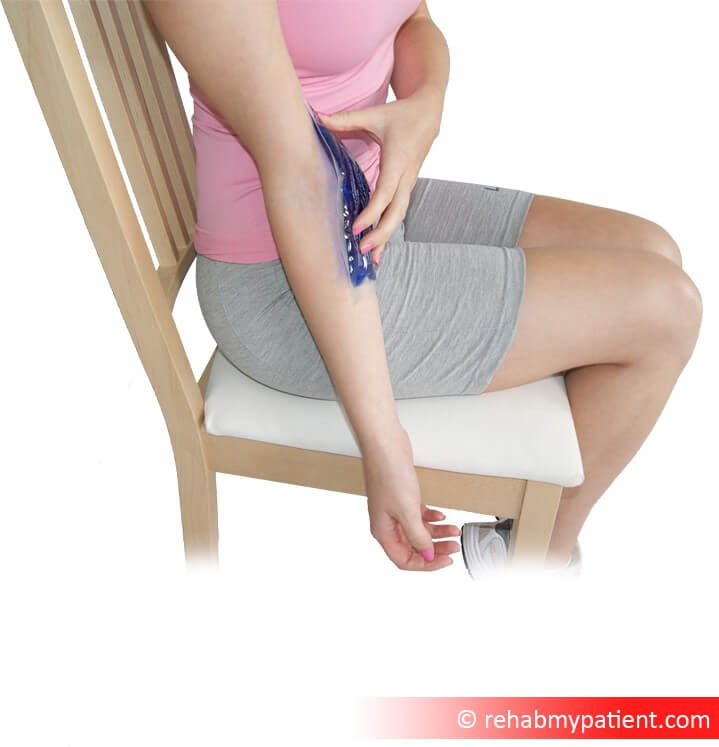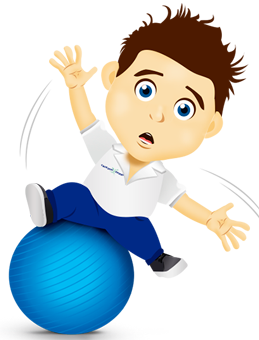
Next steps:
Feel free to read the advice sheet below! To get the full benefit click on 'Start treatment'. By starting the treatment you will get access to weekly rehab programmes online for FREE. You will be able to track your progress, pain levels and we will remind you to do your exercises every day!
Golfer’s elbow can cause inflammation and pain in the tendons connecting the forearm and the elbow. The pain is centered around the bony bump on the inside of the elbow and can end up radiating into the forearm. It is often treated by resting the injured area. Golfer’s elbow is often caused by overusing the muscles in the forearm used to grip, flex the wrist and rotate the arm. Repetitive gripping, flexing and swinging can all cause small pulls or tiny tears in the tendons.
Regardless of the name, the condition doesn’t just affect those who golf. Any repeated movements in the wrist, hand or forearm can lead to the condition. Risky sports like bowling, tennis and baseball all lead to this condition. People might also get the condition from painting, raking and using a screwdriver or hammer.
Golfer’s elbow isn’t as common as that of tennis elbow. It affects the tendons on the inside of the elbow rather than tennis elbow affecting the tendons on the outside.
Golfer’s elbow is sometimes called medial epicondylitis, medial epicondyle tendinosis, or medial epicondyle tendinopathy.
Golfer’s Elbow Anatomy
Medial epicondylitis is an inflammation where the tendons in the forearm are attached to the bony part of the inner elbow. The forearm muscles are attached by tendons to the bony prominence on the inside of the elbow, and this is a common tendon so its formed from many muscles, and this tends to the reason why it can be under so much strain.
The tendon can become strained during a golf swing, but numerous other movements can also injure the tendon. It is characterized by tenderness and local pain in the elbow. Range of motion isn’t affected because the inner joint in the elbow isn’t affected. Activities requiring straining or twisting can elicit pain and cause the condition to worsen.

How to Treat Golfer’s Elbow:
- Ice
Apply ice for five to ten minutes at a time for three to five times per day. Doing so will help to alleviate some of the pain and swelling in the joint. Don’t just ice for 2-3 days though, as golfer’s elbow is a very chronic condition, so expect to ice the area for up to 6 weeks or in some cases longer.

- Identify Repetitive Movements
Allow the injured elbow to rest for a minimum of a few weeks. The last thing you want to do is cause further injury to the elbow from overusing it and not providing it the time it needs to heal. Work out which activities are causing the problem and stop them. It’s easy if you are a golfer, stop playing golf for a few weeks. But if you are not sure of the cause, look very carefully at your lifestyle to see if the problem is caused by any fine fingers or wrist movements such as typing, needlework, or playing a musical instrument.
- Anti-Inflammatory Medication
An anti-inflammatory medication can help with reducing swelling and pain. Topical medications might also prove useful. Injections of a painkiller can help to relieve swelling and pain in the short-term, but they don’t have a lot of long-term effects so only use these if the pain is acute. Instead look at more natural alternatives.
- Exercise
A doctor or therapist might recommend that you begin stretching exercises and work your way into strength training. Avoid returning to the activities that cause the elbow to get injured until the condition has had a chance to fully heal. - Steroid Injection
A steroid injection is certainly worth considering if the pain is uncontrollable, or the elbow just isn’t improving with conventional treatment. Steroid injections are not for everybody, with some suggestion that repeated injections can weaken the tendon sheath. But the steroid is a strong anti-inflammatory that can hit the pain and inflammation effectively.
- Electrotherapy and Others
Ultrasound, TENS, shockwave, and acupuncture can all be used successfully but they might not work for everyone.
Tips:
- The key to preventing golfer’s elbow is to avoid overusing the joint.
- The condition can often be brought on from using improper equipment, such as that of a golf club that is too heavy or a grip is too large or too narrow.
- Bad technique, such as the wrong posture in a swing, can cause the condition to occur.
- If you feel any pain in the elbow when performing an activity, you need to stop it before it gets worse.
- Football, baseball, archery, bowling, golf and tennis all attribute to golfer’s elbow from occurring.

